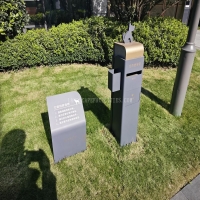Welcome to the website for landscape facilities products and knowledge.
What are the most critical factors to consider when selecting a table for high-traffic public spaces?
Choosing appropriate tables for high-traffic public spaces requires careful evaluation of multiple critical factors that determine long-term performance and user satisfaction. Durability stands as the foremost consideration, as public furniture must withstand constant use, potential impacts, and varying environmental conditions. The selection of appropriate materials becomes paramount – commercial-grade plastics, powder-coated metals, and industrial laminates typically outperform residential alternatives in both longevity and maintenance requirements.
Structural integrity represents another vital aspect, with table frames needing robust construction methods such as reinforced welding or mechanical fastening systems that resist loosening over time. Weight distribution and stability prove particularly important in unsupervised environments where tables might be subjected to uneven loading or accidental collisions. Many manufacturers now incorporate anti-tip features and weighted bases to address these concerns.
Maintenance requirements significantly impact the total cost of ownership, with seamless designs, non-porous surfaces, and easily replaceable components reducing long-term upkeep expenses. Surfaces that resist staining, scratching, and bacterial growth contribute to both aesthetic preservation and public health standards. Additionally, considerations around cleaning protocols should influence material selection, as public spaces often require frequent, sometimes aggressive, cleaning methods.
Safety considerations extend beyond structural stability to include rounded edges, temperature-resistant surfaces, and fire-retardant materials. Accessibility compliance further complicates selection, requiring attention to height clearances, knee space dimensions, and approach angles for wheelchair users. These regulatory requirements often vary by jurisdiction but remain non-negotiable for public installations.
Aesthetic integration with the surrounding environment plays a crucial role in the user experience, with color fastness, design coherence, and psychological impact all contributing to the space's overall atmosphere. However, visual appeal must never compromise functional requirements in high-traffic settings. The most successful table selections balance aesthetic aspirations with practical durability, creating spaces that remain both attractive and functional through years of continuous use.
Environmental factors including UV resistance for outdoor applications, moisture tolerance for food service areas, and temperature stability for seasonal variations further refine the selection criteria. Manufacturers specializing in commercial furniture typically provide detailed specifications regarding these performance characteristics, enabling informed decision-making based on specific environmental challenges.
Ultimately, the selection process requires balancing initial investment against long-term performance, with the most economical choice often being the product that maintains its functionality and appearance through extended service life rather than the option with the lowest purchase price.
Related search:

Recommendation
Outdoor cat and dog feces trash can; Community pet trash can; Metal multi-color design